|

Synopsis:
In 17th century France, a young boy (Julius Molnar Jr.) whose mouth has been carved into a permanent smile as punishment to his disloyal father is adopted by a kind mountebank named Ursus (Cesare Gravina). Years later, Gwynplaine (Conrad Veidt) and a young blind woman named Dea (Mary Philbin) find themselves in love, but Gwynplaine is unwilling to let Dea touch his disfigured face; meanwhile a fun-loving duchess (Olga Baclanova) toys with the idea of having Gwynplaine as a lover, but is surprised to learn that he’s actually a nobleman who is rightful heir to her property.
|
|
Genres, Themes, Actors, and Directors:
- Conrad Veidt Films
- Disfigured Faces
- Historical Drama
- Horror
- Mistaken or Hidden Identities
- Royalty and Nobility
- Silent Films
Review:
Former German set designer Paul Leni made only a handful of films in Hollywood before dying far too young from blood poisoning in 1929. His best known titles as a director are the episodic German fantasy film Waxworks (1924); a silent version of The Cat and the Canary (1927); and his penultimate feature, this unexpectedly creepy horror-melodrama based on a novel by Victor Hugo. There’s something inherently unsettling about facial disfigurement as represented on screen, with Georges Franju’s Eyes Without a Face (1960) perhaps epitomizing the sub-genre, and Hugo’s own The Phantom of the Opera (1925) offering a variation on the same theme of a disfigured man hiding his face from the sweet young woman he loves (played by Philbin in both films). Assisted by Jack Pierce’s stunning make-up design, Veidt fully inhabits the role of the unfortunate Gwynplaine, whose face is etched into a permanent smile no matter what his mood; it’s difficult to describe exactly how disturbing his scarred visage is until one sees it flashed across the screen time and again. (Veidt’s appearance here was acknowledged as a direct influence on Bob Kane, who created The Joker for DC Comics.)
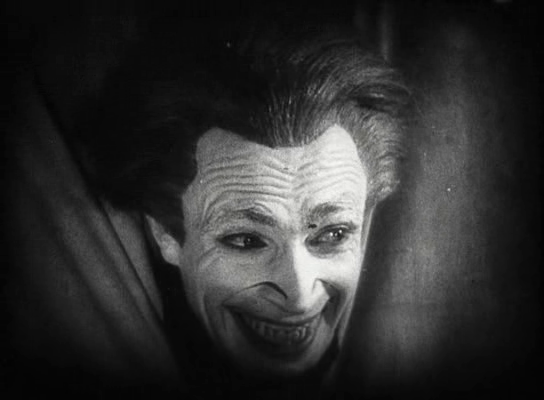
Adding to the pathos of Veidt’s curse is the deeply disturbing backstory of how he received his disfigurement as a young boy; the thought of a group of malevolent gypsies known for causing permanent damage to young children chills me to my bones.
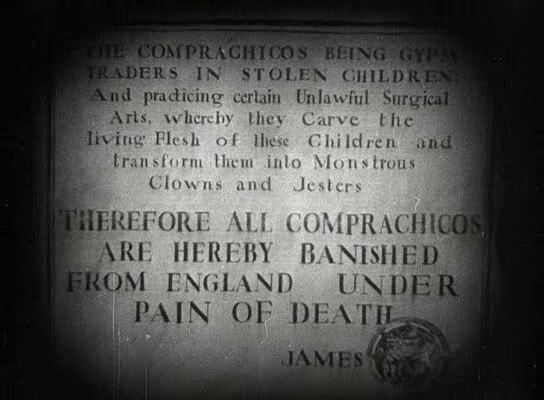
Indeed, the film’s opening sequences are its most powerful, with the remainder of the storyline occasionally bogged down by the complex “hidden identity” narrative arc, which detracts from the twisted love triangle between Veidt, Philbin, and Baclanova (looking eerily like Madonna), whose fetishistic desires compel her to toy with Veidt’s emotions; although she’s best known for her iconic work as the villainess in Tod Browning’s Freaks (1932), she’s equally compelling in this role. Meanwhile, wild-haired Gravina brings unexpected pathos to his role as Gwynplaine and Dea’s caretaker, who comes across as refreshingly sympathetic and paternal rather than exploitative. Enormous credit for the film’s overall success, however, belongs to Leni and his behind-the-scenes crew, who film the entire storyline with Expressionistic flair, utilizing atmospheric sets and cinematography to effectively highlight the horror-driven drama behind Hugo’s narrative.
Redeeming Qualities and Moments:
- Conrad Veidt as Gwynplaine
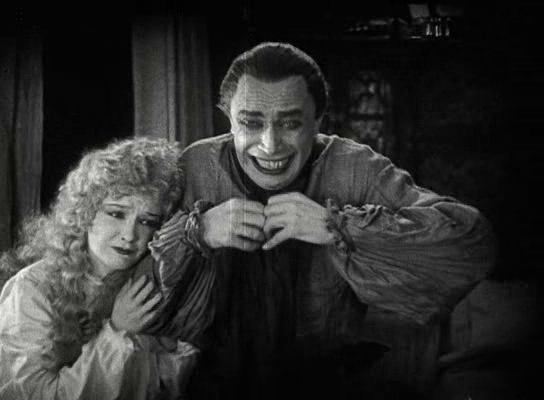
- Olga Baclanova as the Duchess Josiana
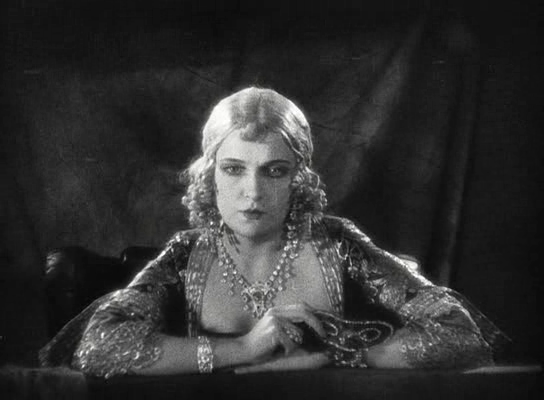
- Cesare Gravina as Ursus
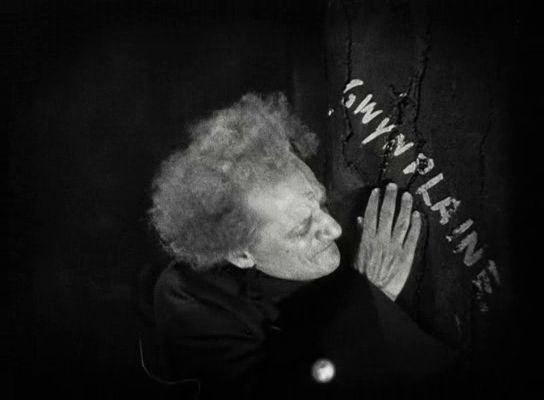
- The unsettling first portion of the film

- Jack Pierce’s creepy makeup

- Atmospheric sets and cinematography
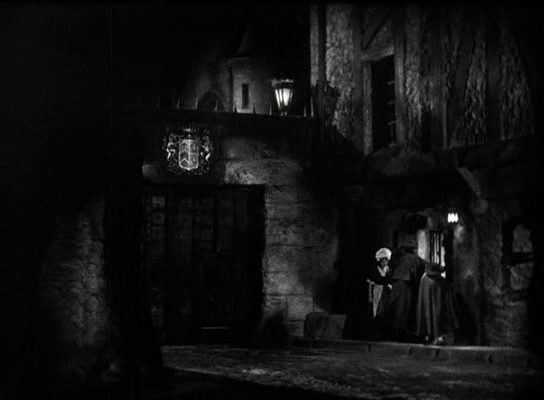
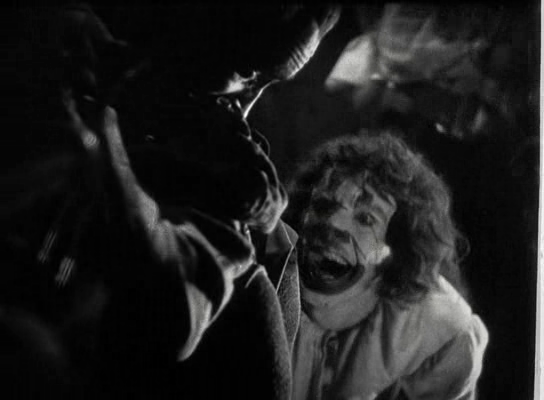
Must See?
Yes, as a truly compelling silent horror-melodrama — and for Veidt’s noteworthy performance. Listed as a film with Historical Importance and a Personal Recommendation in the back of Peary’s book.
Categories
- Genuine Classic
- Noteworthy Performance(s)
Links:
|










One thought on “Man Who Laughs, The (1928)”
First viewing. A once-must, for its place in cinema history…though with reservations.
The review is well put. But, personally, I think – for the purposes of economy and drive – the first 3/4 of the film could have about 10-15 minutes excised without losing much of anything. There’s not enough going on within that time frame – so either it needs to be punched up with more plot or sharpened for effect.
For example, Philbin’s character has way too little to do – and she’s blind and can’t do much – and we get a lot of sympathy coverage of her not doing much of anything.
That said, the last 30 minutes of the film are a different story and here is where directorial and visual accomplishment come into play (so the viewer needs to be a little patient prior). In this lengthy conclusive segment, everything works and nothing is wasted. Actually, it’s rather riveting at that point.
I can’t say it’s among my favorite silent films, but it certainly, ultimately, packs enough for ffs to make time for it.
Note: Being gay, I couldn’t help but take note of the fact that the courageous dog’s name is Homo. Gay people in particular are going to find that amusing – for example, when Philbin asks him, ‘Where are you taking me, Homo?’ And, of course, when Veidt simply cries out near film’s end…’Homo!’